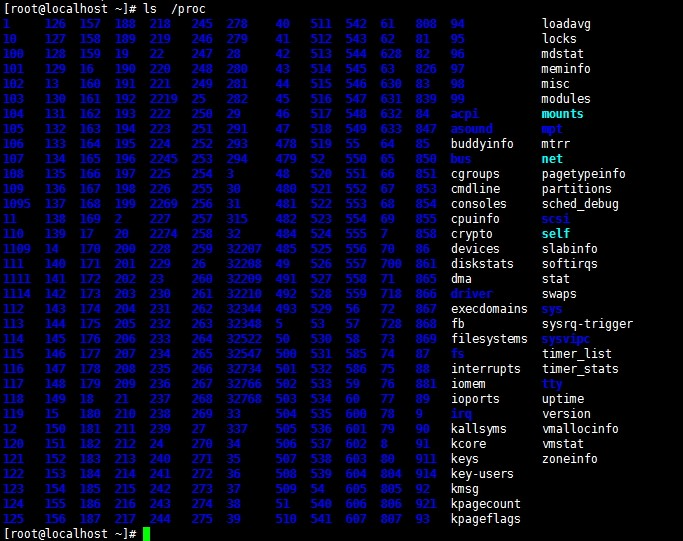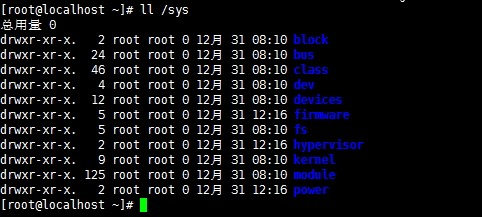Home >System Tutorial >LINUX >Explore the mysteries of Linux kernel modules
Explore the mysteries of Linux kernel modules
- WBOYWBOYWBOYWBOYWBOYWBOYWBOYWBOYWBOYWBOYWBOYWBOYWBforward
- 2024-02-14 17:10:17867browse
In the Linux operating system, the kernel is the core part, which controls the interaction between computer hardware and software. The kernel module is an important concept in the kernel. It can be dynamically loaded into the kernel at runtime, thus extending the functionality of the kernel. In this article, we'll take a deep dive into how Linux kernel modules work and are made up of, and explain how to write your own.
Linux kernel modular design
1. Linux kernel design: single kernel, modular (dynamic loading and unloading)
(1) Linux: single-kernel design, but fully draws on the advantages of the microkernel system design; introduces a modular mechanism to the kernel;
(2) Components of the kernel:
kernel: kernel core, usually in bzImage format, usually located in the /boot directory, named vmlinuz-VERSION-release;
This file will no longer be used after the system is started because it has been loaded into the memory and placed under /boot for easy management
Kernel object: Kernel module, generally placed in /lib/modules/VERSION-release/
The kernel module and the kernel core version must strictly match;
2. Kernel module: compile selection mode
[ ]: N, do not compile this part
[M]: Module, compiled in a modular manner, can be temporarily loaded, takes up disk space and does not occupy kernel space
[*]: Y, compiled into the kernel core, can be called directly
3.ramdisk: Auxiliary file, not necessary, depends on whether the kernel can directly drive the device where rootfs is located
ramdisk: A simplified version of the root file system. The available drivers are as follows:
Target device driver, such as SCSI device driver;
Logical device driver, such as LVM device driver;
File system, such as xfs file system;
Kernel module information acquisition and management commands
1.ldd: Print library files that binary applications depend on -print shared library dependencies
Format: ldd [OPTION]… FILE…
show:
\1) Dependent library file name => Dependent library file path (corresponding to the memory loading symbolic link mapping point)
\2) Entrance to the entire system call library
linux-vdso.so.1 => (0x00007fff293fe000) /lib64/ld-linux-x86-64.so.2 (0x00007f0228073000)

2.uname: Kernel information acquisition -print system information
Format: uname [OPTION]…
uname -a: Display all kernel information
uname -v: The compiled version number of the kernel
uname -r: kernel release number
uname -n: hostname
3.lsmod: List kernel modules
The displayed kernel comes from /proc/modules
Module name, size, number of times it is referenced, and what it is referenced
4.modinfo command: display detailed information of the specified module
Format: modinfo [-F field] [-k kernel] [modulename|filename…]
-k kernel: To query module information on another kernel when multiple kernels coexist
-F field: Only display information about the specified field;
-n: Display file path;
Display relevant information by reading the original data of the /lib/modules/ #/* file
#/* file Display content: file name, protocol, description, author, alias, version number applicable to RHEL, dependent modules, signature unit, signature, encryption algorithm
Display content: file name, protocol, description, author, alias, version number applicable to RHEL, dependent modules, signature unit, signature, encryption algorithm
5.modprobe: Implement module loading and unloading, and also mount dependent modules
Format: modprobe [-r] module_name
Dynamic loading of modules: modprobe module_name
Dynamic uninstall: modprobe -r module_name Note: Do not uninstall modules loaded by default
Note: Do not uninstall modules loaded by default
6.depmod:- Generate modules.dep and map files
Tool for generating kernel module dependency files and system information mapping files;
7.insmod, rmmod: loading and unloading of modules cannot automatically resolve module dependencies
insmod [filename] [module options…] filename: the file path of the module file; rmmod [module_name]
Management of ramdisk files1.mkinitrd(CentOS 5): Remake the ramdisk file for the currently used kernel
# mkinitrd [OPTION…] []
–with=: In addition to the default modules, modules that need to be loaded into initramfs;
Example: ~]# mkinitrd /boot/initramfs-(uname -r)
2.dracut(CentOS 6/7, compatible with 5): – low-level tool for generating an initramfs image #### dracut [OPTION…] [ []] Example: ~]# dracut /boot/initramfs-(uname -r)###Kernel information output pseudo file system
1./proc: The output interface for kernel status and statistical information; also provides a configuration interface, /proc/sys
(1) Parameters:
Read-only: information output; for example /proc/#/, process related information
Writable: The user can specify a "new value" to configure a certain function or feature of the kernel; /proc/sys/
Format: /proc/sys: net/ipv4/ip_forward is equivalent to net.ipv4.ip_forward
(2) Modify parameter method
\1) sysctl command
Specially used to view or set the value of parameters in the /proc/sys directory; sysctl [options] [variable[=value]]
View: # sysctl -a; # sysctl variable
Modify its value: # sysctl -w variable=value
\2) File system commands (cat, echo)
View: # cat /proc/sys/PATH/TO/SOME_KERNEL_FILE
Setting: # echo “VALUE” > /proc/sys/PATH/TO/SOME_KERNEL_FILE
\3) Configuration files: /etc/sysctl.conf, /etc/sysctl.d/.conf
Immediately effective method: sysctl -p [/PATH/TO/CONFIG_FILE]
(3)Important kernel parameters
net.ipv4.ip_forward: core forwarding;
vm.drop_caches:
kernel.hostname: host name;
net.ipv4.icmp_echo_ignore_all: Ignore all ping operations;
2./sys directory: introduced after Kernel 2.6 version
sys file system: outputs the relevant attribute information of each hardware device recognized by the kernel, and also has the kernel’s settable parameters for the hardware characteristics;
Modifying these parameters can customize the working characteristics of the hardware device;
udev: Create device files for each hardware device on demand by reading the hardware device information in the /sys directory;
udev is a user space program; special tools: devadmin, hotplug;
When udev creates a device file for a device, it will read its predefined rule file
Generally in the /etc/udev/rules.d/ directory and the /usr/lib/udev/rules.d/ directory;
To summarize, the kernel module is a very important part of the Linux kernel, which can provide the kernel with rich extension functions and help users better adapt to specific hardware or application scenarios. When using kernel modules, you need to be careful not to damage the stability and security of the kernel. It is recommended to use and write kernel modules only when necessary. I believe that the content of this article can help readers better understand and apply Linux kernel modules.
The above is the detailed content of Explore the mysteries of Linux kernel modules. For more information, please follow other related articles on the PHP Chinese website!

